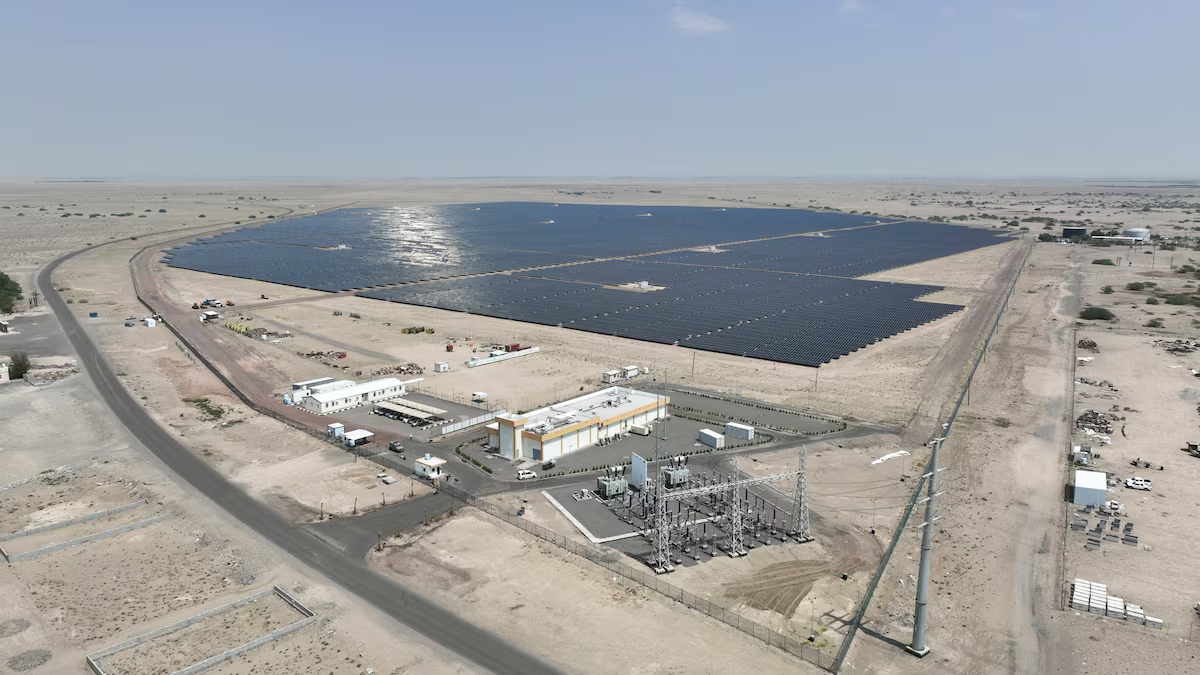By Sally Goldman
In Yemen, a nation long plagued by conflict and chronic electricity shortages, a beacon of hope shines in the southern port city of Aden. The Aden Solar Power Plant, the country’s first large-scale solar facility, has been operational since July 2024, offering a glimmer of relief to a population weary of power outages and scorching summer heat. Funded by the United Arab Emirates, this 120-megawatt plant is a pivotal step toward addressing Yemen’s energy crisis, in a country the International Energy Agency ranks as the Middle East’s least electrified.
For nearly three decades, Yemen has struggled with an electricity crisis exacerbated by fuel shortages and a devastating war that crippled its national power infrastructure. Aden, the interim seat of Yemen’s internationally recognized government, has been particularly hard-hit. Businesses like Mubarak Qaid’s supermarket have borne the brunt of frequent outages, with spoiled goods and financial losses becoming all too common. “Power outages used to cause damage to goods, and when we returned the damaged items to suppliers, they would not accept them, leaving us, the merchants, to bear the loss,” Qaid told Reuters.
The Aden Solar Power Plant, located just north of the city, is changing that narrative. Supplying electricity to 150,000 to 170,000 homes daily, according to technician Sabri al-Maamari, the plant is a lifeline for residents and businesses alike. In a country where solar power accounted for just 10.4% of electricity generation in 2023, this project marks a bold shift toward renewable energy.
The plant’s impact is immediate and tangible. For the first time in years, Aden’s residents can rely on a more stable power supply, particularly during the intense summer months when demand soars. Small businesses, from grocery stores to local workshops, are experiencing fewer disruptions, allowing them to operate more efficiently and reduce losses. The plant’s clean energy also offers an environmentally friendly alternative to Yemen’s reliance on fossil fuels, which are often scarce and expensive due to the ongoing conflict.
The UAE’s investment in the Aden Solar Power Plant reflects a broader commitment to supporting Yemen’s recovery. By harnessing the region’s abundant sunlight, the project not only addresses immediate energy needs but also sets a precedent for sustainable development in a war-torn nation. With plans for a second phase in 2026 to double the plant’s capacity to 240 megawatts, Yemen’s renewable energy sector is poised for significant growth.
Despite its promise, the Aden Solar Power Plant is just one piece of a complex puzzle. Yemen’s energy infrastructure remains severely damaged, and the war continues to complicate efforts to rebuild. Expanding solar energy nationwide will require substantial investment, technical expertise, and political stability—challenges that Yemen’s government and international partners must navigate carefully.
Yet, the success of the Aden plant offers a blueprint for the future. Solar power, abundant and renewable, is uniquely suited to Yemen’s geography and climate. As the country looks to rebuild, projects like this could pave the way for a more resilient and sustainable energy grid, reducing dependence on volatile fuel imports and fostering economic stability.
The Aden Solar Power Plant is more than a power station; it’s a symbol of resilience and renewal for a nation battered by conflict. For residents like Mubarak Qaid, it means fewer losses and a chance to thrive. For Yemen, it represents a critical step toward energy independence and a brighter, more sustainable future.
As the world watches Yemen’s journey, the planned expansion of the Aden plant in 2026 signals that this is only the beginning. With continued investment and innovation, solar power could illuminate not just Aden, but all of Yemen, offering hope to a nation ready to emerge from the shadows.















